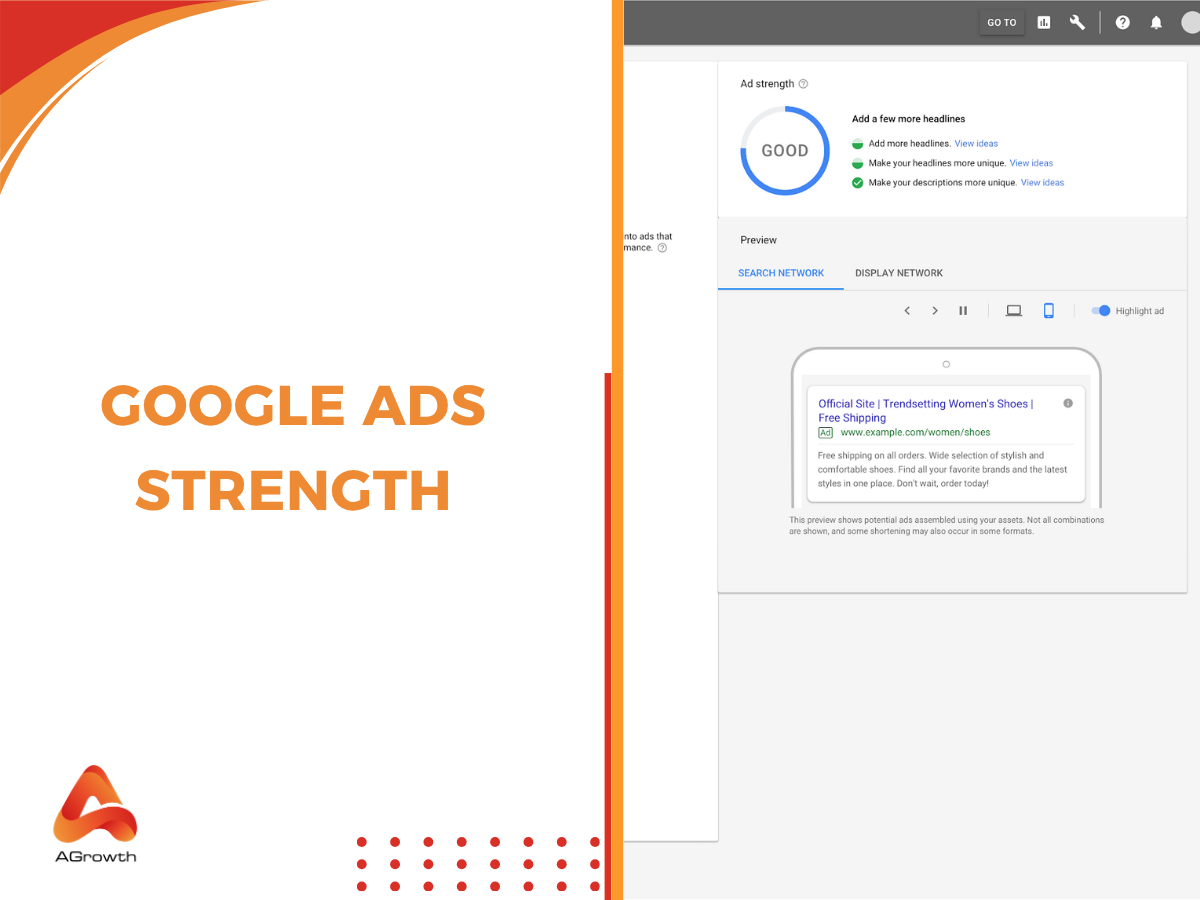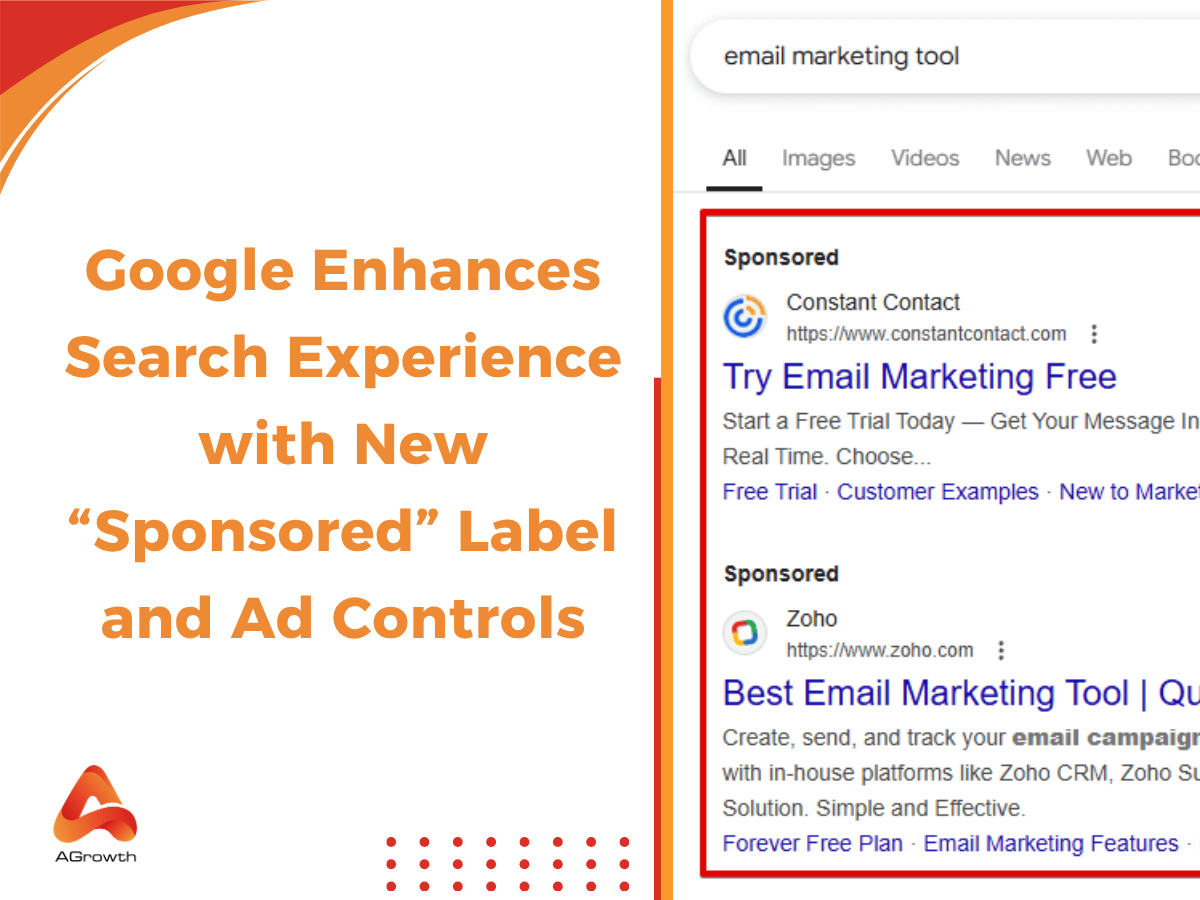
Table of Contents
Ad Strength in Google Ads: What It Is, How It Matters & How to Improve It
In the ever-shifting landscape of Google Ads, advertisers are constantly bombarded with new metrics, recommendations, and "best practices." Among the most visible—and often debated—is Ad Strength. It sits there in your interface, judging your every creative move, shifting from "Poor" to "Excellent."
But for the seasoned advertiser focused on ROAS and conversions, the critical question remains: Does Ad Strength actually matter? Or is it just another vanity metric designed to make us follow Google's playbook?
This guide cuts through the noise. We'll dissect Ad Strength, compare it to the metrics you already care about, and provide an advanced framework for improving it—without sacrificing performance or brand integrity.
Does Google Ad Strength Matter?
Yes, Ad Strength matters, but not as a direct ranking factor. It does not have a direct impact on your Google Ad Rank in the way that Quality Score, bids, and ad formats do.
Think of Ad Strength not as a goal in itself, but as a real-time diagnostic tool. It's Google's way of guiding you toward building statistically better Responsive Search Ads (RSAs) and Performance Max asset groups. An "Excellent" rating indicates you've given Google's machine learning algorithm a rich, diverse, and relevant set of creative assets to work with.
What is Ad Strength?
Ad Strength is a dynamic Google Ads metric that provides a real-time evaluation of the relevance, quantity, and diversity of the creative assets within your Responsive Search Ads (RSAs) and asset-based campaigns like Performance Max.
Its sole purpose is to measure the quality of your inputs for a single ad unit. It assesses the headlines and descriptions you provide, rating them on a scale:
-
Poor
-
Average
-
Good
-
Excellent
As you add or modify assets, the score updates, providing instant feedback and specific suggestions, such as "Add more headlines" or "Make your descriptions more unique."

How Does Ad Strength Affect Google Ads Campaigns?
Ad Strength acts as a creative quality benchmark. It reflects how well your ads follow Google’s best practices for responsive search ads (RSA) and other asset-based formats. As Google itself explains, this rating is meant to “show how well your ads make a good first impression on your target audience.”
Here’s why that matters:
-
Indirect impact on conversions
While Ad Strength doesn’t change auction outcomes, it can influence engagement. Ads with diverse, relevant, and high-quality assets are more likely to resonate with different segments of your audience. This often translates into higher click-through rates and, ultimately, stronger conversion potential. -
Indicator of creative readiness
Poor or “Average” Ad Strength often signals a lack of variety — duplicate headlines, weak descriptions, or insufficient CTAs. These issues don’t stop your ads from serving, but they can prevent Google’s machine learning from testing optimal combinations. -
Quantifiable performance lift
Google’s own studies show that improving Ad Strength from “Poor” to “Excellent” can deliver measurable results. According to Google, responsive search ads with Excellent Ad Strength can drive 12% more conversions compared to weaker setups. This isn’t guaranteed for every advertiser, but it underscores the value of improving your ad assets before launch.
How Google calculates Ad Strength
Understanding what goes into Ad Strength is key to improving it. Google has never published the exact formula, but based on documentation and studies from Optmyzr, HawkSEM, and others, the following factors matter most:
-
Asset quantity: Add more unique headlines and descriptions, but avoid duplication. Google recommends at least 8–10 headlines and 3–4 descriptions for RSAs.
-
Relevance: Include primary and secondary keywords naturally in your ad copy. This helps both Ad Strength and user intent matching.
-
Diversity: Provide distinct messages—don’t repeat the same value proposition with minor wording changes. Mix benefits, features, social proof, and CTAs.
-
Visuals: In asset-based campaigns like Performance Max, provide a variety of image and video formats (landscape, square, portrait).
-
Avoid over-pinning: Pinning headlines or descriptions can limit Google’s ability to test combinations. Use pinning sparingly for compliance or brand guidelines.
-
Quick UX tip: Use Google’s auto-suggestions as inspiration, but make sure they reflect your brand voice and value propositions. This is similar to how the Google Ads Optimize Score provides account-level recommendations, guiding you toward broader best practices
How to Improve Ad Strength in Google Ads
Improving Ad Strength isn’t just about hitting “Excellent” in the interface — it’s about creating ad assets that perform in the real world. Google looks at factors like variety, relevance, and coverage when assigning a rating, but you should approach it as a framework for building better ads rather than a final grade.
Step 1: Provide a Higher Volume of Unique Assets
Google recommends at least 10–15 headlines and four descriptions for responsive search ads. The more unique your assets, the more combinations Google can test. Avoid duplicates or near-identical phrasing, as these reduce variety. Think of each headline as serving a different angle: feature, benefit, value proposition, or proof point.
Step 2: Prioritize Keyword Relevance and Intent
Include your primary keyword in a few headlines and descriptions, but don’t overstuff. Instead, use variations that align with different stages of intent (e.g., “Buy Today” for transactional searches vs. “Learn More” for research-oriented searches). Mastering the different Google Ads keyword match types is essential for aligning your ad copy with this intent.
Step 3: Diversify Messaging Across Assets
Strong ads balance product features, benefits, and credibility signals (like reviews, awards, or guarantees). A good mix allows Google’s machine learning to serve the right message to the right person at the right time. If all of your assets highlight the same selling point, you miss the opportunity to appeal to broader audience motivations.
Step 4: Use Visual Assets Wisely
For campaigns that support image or video extensions (like Performance Max or Demand Gen), add creative variations in multiple aspect ratios (square, landscape, vertical). This improves placement eligibility across the Google ecosystem. Don’t just resize the same graphic — adapt visuals to highlight different offers or messages.
Step 5: Pin Headlines & Descriptions Sparingly
Pinning ensures certain assets always show in a specific position, but over-pinning reduces variety and limits Google’s ability to test. Use pinning strategically for must-have compliance elements (like legal disclaimers or regulated claims), while letting the algorithm rotate other messaging freely.
Step 6: Take Advantage of Google’s Suggestions (But Verify)
Google Ads often provides real-time prompts to add more variety or insert specific keywords. These are useful starting points, but they aren’t always on brand. Use them as inspiration, then refine to match your brand tone and messaging strategy.
Step 7: Continuously Test and Refresh Assets
Even if you’ve reached “Excellent” Ad Strength, performance can stagnate over time. This process of continuous improvement is the core of effective Google ad a/b testing. Rotate in new headlines or offers every few months, especially after seasonal campaigns. Testing new value propositions helps Google’s system stay effective in learning and serving the best-fit ads.

Common Mistakes and How to Avoid Them
Even experienced advertisers can fall into common traps when optimizing for Ad Strength.
Chasing "Excellent" at the Expense of Performance
The most common mistake is treating Ad Strength as the ultimate goal. Remember, your goal is conversions, leads, or sales. If an "Average" ad with a sharp, clear message is outperforming an "Excellent" ad filled with generic, keyword-stuffed phrases, the "Average" ad is the winner.
How to avoid: Prioritize your primary conversion metrics (Conversion Rate, CPA, ROAS). Use Ad Strength as a guide during creation, but let performance data dictate your optimization decisions.
Redundant and Repetitive Assets
Providing 15 headlines that are just slight variations of each other ("Great Deals on Shoes," "Awesome Deals on Shoes," "Shop Shoe Deals Today") does not count as diversity. The algorithm is smart enough to see through this.
How to avoid: Use the messaging pillar strategy mentioned earlier. Ensure each asset communicates a distinct value proposition.
Ignoring Ad Customizers and Dynamic Features
Static text is no longer enough. Features like Google Keyword Insertion, Countdown Customizers, and Location Insertion can dramatically increase relevance. For even more advanced personalization, explore how a Google Ad Customizer can dynamically change your ad text based on your audience or product feed
How to avoid: Weave these dynamic elements into your assets. For example, a headline like {KeyWord:Luxury Leather Shoes} can make your ad hyper-relevant to a user's specific long-tail search.
AGROWTH - GOOGLE AGENCY ACCOUNT
⭐ Managed campaigns with expert guidance
⭐ Flexible invoice-based billings, custom top-ups
⭐ High resistance to suspension via agency tier
⭐ Quick fund transfer to new account if needed
⭐ Priority support via Google Partner channel
⭐ Lower fees from 3-5%
⭐ Eligible for bonus credit up to $384
FAQs about Google Ad Strength
Does an "Excellent" Ad Strength guarantee high performance?
No. "Excellent" Ad Strength guarantees you have followed Google's creative best practices. It gives your ad the potential to perform well by enabling robust testing. However, performance is still ultimately determined by user response, your bid, targeting, and landing page experience.
To make the most of your budget, it's essential to have a deep understanding of Google Ads bidding strategies and know when to leverage Google Ads Automated Bidding to your advantage.
Can an ad with "Poor" Ad Strength still run and get conversions?
Yes, it can. An ad with "Poor" strength will still enter the auction. However, it may be served less often, as Google's system might predict that the limited asset combination will have a lower CTR. It may be a struggle to get significant impression volume.
How often should I refresh ad assets to maintain strong Ad Strength?
A good rule of thumb is to review and update ad assets every 2–3 months, or after major seasonal campaigns. Google’s system thrives on fresh data, and rotating in new headlines, offers, or creatives keeps your ads competitive. Even if you already have “Excellent” Ad Strength, refreshing helps avoid ad fatigue and gives the algorithm new combinations to test. This is particularly important in industries with frequent product launches or promotional cycles.
Can I pin headlines without hurting Ad Strength?
Yes, but sparingly. Pinning ensures certain headlines or descriptions always appear in specific positions, which is critical in regulated industries or when you need disclaimers. However, if you pin too many assets, you limit Google’s ability to experiment with combinations, which usually lowers Ad Strength. A good balance is to pin only must-have compliance text while leaving the rest free for rotation, so the algorithm can optimize toward performance.
Related posts









Your comment